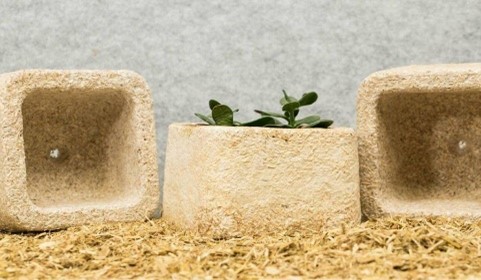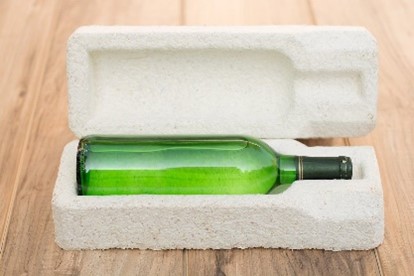

The styrofoam-like packaging material is primarily made of fungus roots and residues from farming. The manufacturing process begins by mixing mycelia, or fungus sprouts, with seedlings or other residues from agriculture. Mycelia acts as a natural adhesive by the virtue of a network of wire-like cells. Without the need for either light, water or any chemical additives, the mycelium grows by and around the residues.
The residues are arranged in such a manner that they create the desired packaging design upon the growth of the mycelia. Mushroom Packaging is also easy to mould post-creation. After about one week, growth is stopped by a drying and heat treatment process. The result is a fully natural composite material that has similar material properties like synthetic foam plastics such as styrofoam.
Unlike styrofoam, Mushroom Packaging consists of 100 percent biodegradable and renewable material that can be broken down in the compost at home after use. Mushroom Packaging, therefore, contributes to “up-cycling” as it provides new value to agricultural waste that otherwise has few other uses and low economic value. Additionally, using the inherent growth power of mushrooms, packaging can be manufactured with minimal energy use.
Compared with polystyrene foam or polyurethane products, mycelium is stronger. It is hydrophobic and flame resistant, which are beneficial properties for applications in industries such as packaging and clothing. Mycelium foam is also resilient, insulating, and breathable.
There are many other applications for mycelium-based products other than foams and plastics. Footwear, leather alternatives, and lampshades can all be made from the same procedure that yields mycelium foam. The foam can be used like a leather substitute, moulded to create textiles, clothing, and shoes.







